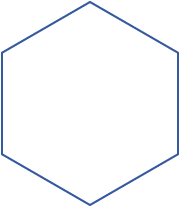 It looks like the hexagonal zeitgeist is finally floating to the surface of our collective media environment. Two stories in particular off of our hexagonal news feed caught my eye this morn:
It looks like the hexagonal zeitgeist is finally floating to the surface of our collective media environment. Two stories in particular off of our hexagonal news feed caught my eye this morn:
Geometry lessons
". . . Just as the 1950s will always be remembered as the decade of atomic-inspired motifs, so may the early decades of the 21st century be remembered, by those of pop cultural bent, as belonging to the hexagon."
The Hexagon Harley 1.4301
"Six is the magic number on this handcrafted custom Harley Davidson by Horst Dzhangmen. Everything but the engine, a HD Shovelhead 1340 cm3 and the frame, has been cut and built into perfectly shaped hexagons and this exceptional work took its creator three years of hard work to achieve this perfection."
One cannot, I believe, overstate the aesthetic value of hexagonal geometry. Its visually-appealing proportions, "nature"-evoking associations, combined with its outright utilitarian, mathematical functionality makes the hexagon a formidable motif for any commercial or cultural venture. It is remarkable how often hexagons are included in packaging, logos, et cetera, simply to convey the sense of balance and proportion they tend to evoke. For instance, yesterday I was walking through a bookstore, and I saw the side of a book on a table called The God of the Hive. Before I even saw the cover, I knew there would be a hexagonal pattern on it. I didn't even look at the cover thinking "Will there be hexagons on this book?" I looked at it thinking "I would like to see the hexagons on this book." And lo, there were hexagons. They weren't even like proper honeycombs per se—they were, as I expected, just geometrical figures in a stylized tessellation. That's all that is necessary to convey the hexagonal symbolism of the honeycomb. For some sort of deeply psychological and ontological reasons, we identify with hexagons as we identify with little else in geometry or mathematics, and this is why we shall, I believe, see a greater and greater hexagonal presence throughout society as we move into a more geometrically conscious age.
It is interesting to consider that perhaps the recent rise of hexagonal geometry directly follows a general return to visual imagery and spatial relationships in modern times, due both to broad social trends and the rise in certain enabling technologies (computers, television, et cetera), somewhat in the manner described by the late Leonard Shlain in his book The Alphabet Versus the Goddess. One could even, I believe, see the hexagon as the very embodiment of humanity's contrasting ways of conceptualizing the world—the hexagon is both an abstract, logical construct and a concrete, visual form in our sensory realm. This is one of many reasons I see the hexagon as the key to the very future of human consciousness itself—it is nothing less than the bridge between left and right brain, logic and intuition, math and art, et cetera, et cetera. And so on.
 The Age of Hexagons
The Age of Hexagons